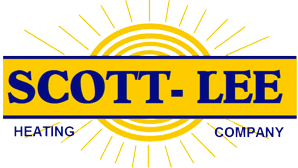February 16, 2017

Assessing Your Furnace Performance This Winter
These 4 signs may indicate that your aging furnace is in need of service or replacement
Your furnace or other heating equipment is integral to keeping your family warm during the colder months. As winter draws to a close, it is an excellent time to assess your furnace and consider how you can improve cost-effectiveness going forward. Taking necessary precautions throughout the heating season, such as cursory inspections, changing air filters and tracking your utility bill, will provide you the information you need to evaluate your furnace and make those kinds of decisions. And while maintenance can certainly make a difference as to the performance of your furnace, it won’t do much if you have an aging furnace. Here are some telltale signs that your furnace may be on its last leg.
Furnace Age
The general industry rule is that furnaces will last 15 to 20 years. The 10-year mark is the point at which you should be acutely aware of the furnace age and view all other information within that context. Deciding how to proceed with a repair, for instance, is much different in year six than it is in year 12. Furnaces can last longer. There are furnaces that last 30 and, in some rare cases, even 40 years. But at this point, the homeowner can save by investing in newer and more energy-efficient equipment.
Seasonal Furnace Tune-Up
You should schedule a seasonal tune-up of your furnace each fall prior to the first use of the system, and this is required by most furnace warranties. A common mistake homeowners make is to skip seasonal maintenance because a furnace ran fine last winter. What many people do not realize is that the cleaning and correction of any wear that takes place during a tune-up help your system to run more efficiently. That means a lower gas or electricity bill each month. Tune-ups can increase efficiency by as much as 30%, and that means that a furnace tune-up will often pay for itself by the end of winter.
Monitoring Your Month-to-Month Heating Costs
Keep your heating bill going back at least five years or, better yet, record your costs each month through the year. You can do this via a written logbook or a spreadsheet stored in the cloud. The important thing is that you can reference how much you spent each month going back five years or more.
One of the most common indicators that you have a furnace problem is a sudden spike in your bill. The problem for the homeowner not paying close attention is that a bill may feel higher than normal, but it can be hard to tell. With the data you record, you can tell. There will be fluctuations year to year and living costs will rise, but if your bill suddenly jumps 10% a more, that may be a sign of a heating problem.
Cold Spots
Uneven heating is a scenario in which most of the home is the desired temperature but some areas are colder. If this occurs the first winter after a new furnace has been installed, it can be an indication that the equipment was improperly sized for the home. It can also indicate that there is a pressure issue with the heating system, which could indicate issues with vents, ductwork or blower. It can also not be a furnace problem at all but rather a sign that insulation should be improved in that area of the home.
Short Cycling and Long Cycling
The average furnace will turn on two to three times an hour and run for about 10 minutes. This is the furnace cycle, and be mindful that your cycle will vary based on the type of equipment you have and how cold it is outside. When a furnace runs for shorter periods and turns on and off more frequently, this is known as short cycling and leads to greater wear and tear on your system. If a furnace runs for periods longer than 15 minutes, this is known as long cycling and also causes issues with wear.
If these problems occur after a new installation, then it may indicate a sizing issue. If these issues manifest suddenly, then the first step is to check for clean air filters and to ensure all vents are open and unobstructed. If that checks out, then the thermostat may be the culprit. Beyond that, it will be necessary to schedule a technician to diagnose the cause of the suboptimal cycling.
Relative Humidity
The comfortable range for relative humidity in winter is 30-40%. The best RH for your home will be the sweet spot in that range for you and your family. Ideally, you should monitor RH through your thermostat or via a standalone hygrometer. However, you do not necessarily need a hygrometer to sense a humidity problem. Air is naturally drier in winter. This can be exacerbated as a byproduct of heating your home, and if you suddenly notice a lot of static electricity or air dry enough to irritate your nose, eyes, mouth, throat and so forth, it could indicate an issue with the furnace.
Unusual Noises
Older furnaces were often loud and creaky. This is not generally the case with modern furnaces, which have gotten much quieter. Still, your furnace will make some noises. Of course, there are some noises that should cause immediate concern. These include loud humming, which can indicate a fan or capacitor problem. Squealing often indicates a bearing or belt problem. Metal scraping against metal often indicates blower troubles. Rumbling that is louder than normal may point to a faulty burner, and banging or popping is an ignition problem that could lead to more damage if not checked right away.
Strange Odors
A burning smell the first time you run your furnace this heating season is to be expected. But if those smells continue they could indicate a dirty heating system. Other smells that are cause for concern include mustiness, dustiness, melting plastic and rotten eggs.
Assess Your Repair Bills
Furnaces have moving parts in addition to components that can be under a great deal of stress. Routine maintenance is the best way to avoid repairs, but even a well-maintained furnace can fail. Your expenses for maintenance and repair are something that you want to track as well. As mentioned earlier, age is an important factor. If those repair bills start to pile up beyond year 10, then it may be time to consider replacing that unit.
Consider the Entire Home
When it comes to heating your home, avoid focusing exclusively on your furnace. Think of your home as a system. There may be steps beyond HVAC to improve heating in your home, such as installing ceiling fans, replacing windows and adding new insulation.
Your Local Furnace Experts in St. Louis
Replacing your furnace will not only help avoid emergency situations when the weather is at its worst, but it can also ensure that your stay comfortable inside your home. Moreover, it will save you significantly on heating costs.
Scott-Lee Heating Company was established in 1978. That means that we have more than 40 years of experience meeting the heating, cooling and ventilation needs of homeowners throughout St. Louis and the surrounding areas. Our company installs, services and repairs furnaces and all manner of other heating equipment. We also install, service and repair air conditioners, and you can count on us for indoor air quality services, including humidifiers, dehumidifiers and air purification systems. Call us today or contact us online with any questions about our services or to schedule an appointment.
